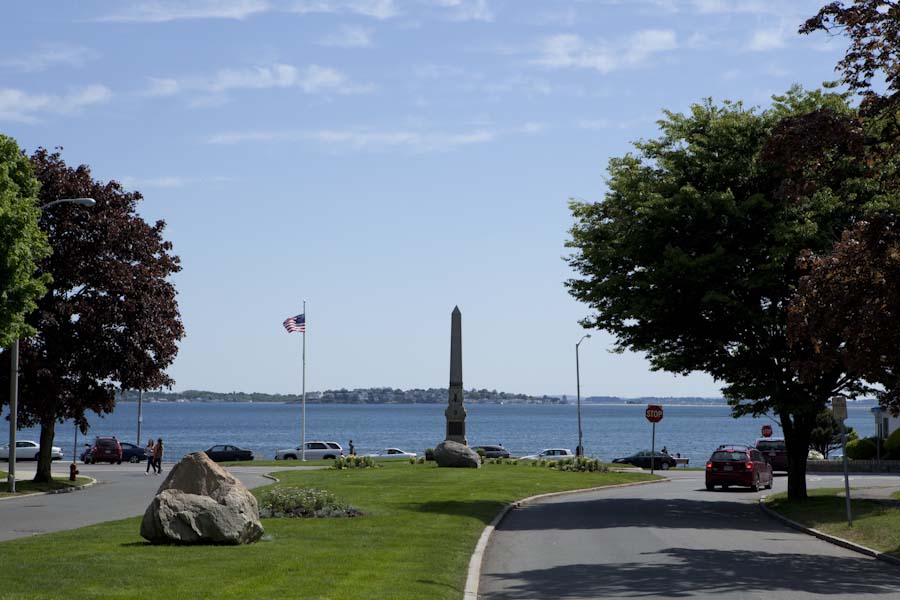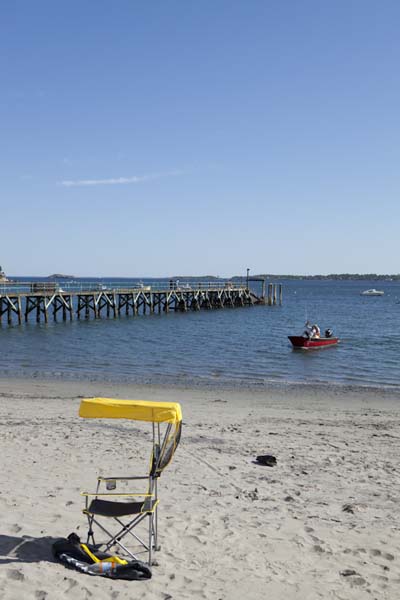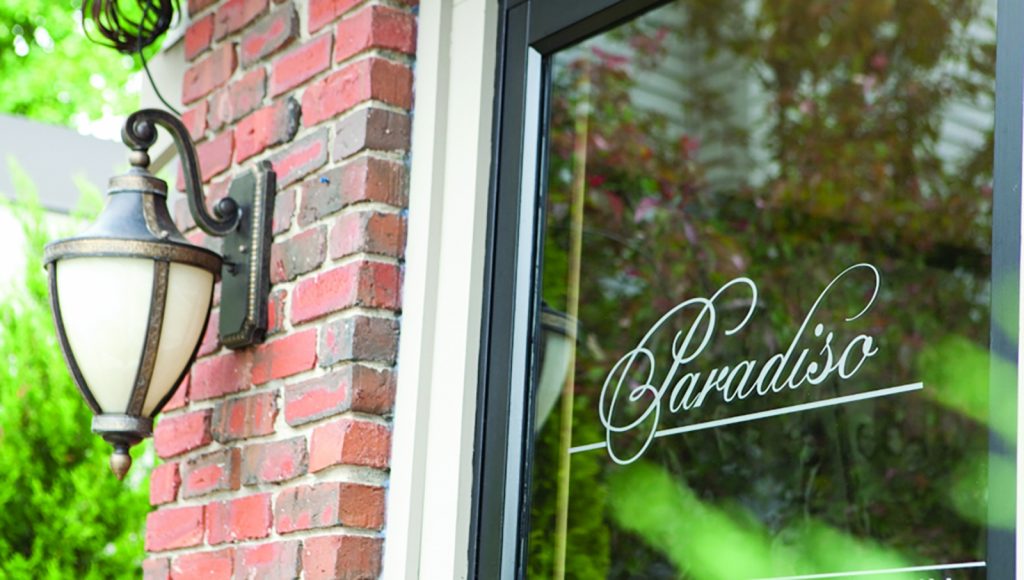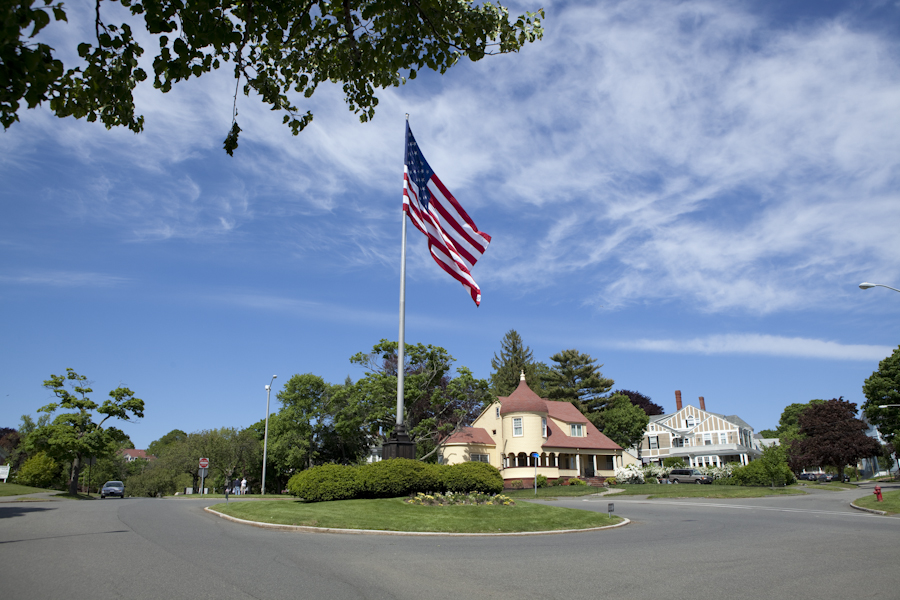To outsiders, Swampscott may be perceived as a place to drive through on the way to somewhere else. With just 3.1 square miles of land, and not quite 15,000 residents, it’s known mainly as “just sort of a sleepy residential seaside town,” says Beth Balliro, chair of the Swampscott Cultural Council and associate professor at Massachusetts College of Art and Design.
But to people like Balliro, Swampscott is truly a town in the midst of renewal, a place where traditions of community are being rekindled and new life is being breathed into old places.

“Each year it seems like there’s more and more growth,” she says. “It seems like there’s a new flow of energy and commitment.”
That growth and change can be seen everywhere, from the picturesque beaches to the town hall lawn and beyond.
Situated on a stunning stretch of the Atlantic Ocean, Swampscott’s fortunes have always been wrapped up in the sea, from the early Naumkeag people who fished there to the white settlers who created a fishing village, and later a commercial fishing fleet of their own, to the wealthy elite who flocked to its resorts and built opulent homes. The town is also known for the Swampscott Dory, a traditional wooden fishing boat.

Now, Swampscott’s reputation for seaside beauty lives on in its beaches, including Eiseman’s, Fisherman’s, King’s, Phillips’, Preston, and Whales/New Ocean House beaches, not to mention Swampscott’s yacht club. You can also find surfers, including those who take surf and paddleboard lessons and get gear at Ocean House Surf & Skate on Humphrey Street.
In fact, nearly everywhere you look in Swampscott there’s evidence of that marriage between tradition and renewel, like with the new Reach Arts Center, a former senior center and VFW hall that’s being transformed into a public center for the arts in town (with ADA compliance), and just hosted its first gallery opening in October.
“It was packed to the gills with really excited people,” Balliro says. “The building is beautiful and so full of potential.”
Another place that’s full of potential is the site of the future Swampscott Rail Trail, which finally got approval and partial funding in the spring of 2017 after decades of discussion and debate. Although it’s still very much in the early planning stages, the finished rail trail will stretch almost two miles through the length of Swampscott, providing a place for people to enjoy open space, a safe walk-to-school route for many of the town’s children, and a reinvention of a former railroad bed.

In addition to the recreation potential, the rail trail will also be designed with the environment in mind, says Peter Kane, Swampscott’s director of community development.
“This will be environmentally minded in that we want to maintain as much of the tree canopy that is within that corridor as possible,” he says. Also, “there are a couple areas where this rail trail is going to go near streams or near wetland, and we want to provide access without impeding it.”
That may include using a boardwalk to pass over water, rather than filling it in. The trail will also go by two large ponds, including one that’s currently inaccessible. In addition, the trail plans to use compacted stone dust, rather than asphalt or black, for its surface, which offers environmental benefits as well. For instance, it doesn’t heat up like black top, it’s easier to maintain, and it’s porous, which allows water to permeate down to tree roots.

Kane also notes an effort to convert the long-shuttered Machon Elementary School into affordable senior housing.
Another place where the town is seeing revitalization is with the restoration of the nondenominational Andrews Chapel, which won a 2017 Massachusetts Historical Commission Historic Preservation Award in November.
“It sat empty and really falling into complete disrepair,” says Deborah Bogardus, chairperson of the Andrews Chapel Restoration Committee. The Gothic Revival-style chapel, which was built in 1923 by local craftsmen out of granite, had holes in the roof, weather damage, rotten walls and floors, and weather and animal damage.
Now, as a result of the committee’s fundraising and renovations such as plastering the walls, repainting the stencil work inside, replacing floors and electrical wiring, and adding a handicap-accessible ramp, the chapel is reopened for use.
Bogardus says the community spirit she felt during the project was “heartwarming,” and it’s a spirit that she sees infiltrating life in Swampscott in a way that she hasn’t seen in years—from the Swampscott by the Sea Summer Concert Series to the Swampscott Farmers Market at the town hall.
“It’s in a place where the community should be using it, and they are now,” she says.
Balliro agrees, adding that the town’s natural beauty and inclusive spirit aren’t lost on her or her neighbors.
“Often the conversation is, ‘Can you believe we live here?’ It’s just a gift,” she says. “I have been consistently moved and inspired by how grateful people are.”
See our Swampscott must-do list here.

